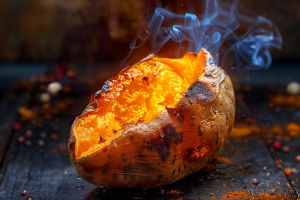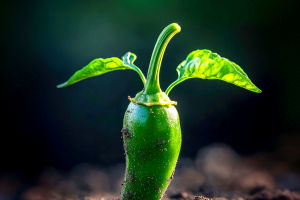Vermicelli is a type of pasta that's often mistaken for noodles due to its long, thin strands. Its name comes from the Italian word "vermicelli," which means "little worms".
It's an incredibly versatile ingredient in Italian cuisine, often used in various pasta dishes, but it can also be found in numerous global dishes with slight variations.
We're all familiar with pasta, but vermicelli stands out due to its unique texture and the way it pairs with both light and rich sauces.
The Origin of Vermicelli
Vermicelli originates from Italy, where it's traditionally thicker than what we usually find in other regions. The term "vermicelli" literally translates to "small worms" because of the pasta's thin and cylindrical shape. However, what might surprise many is that the size of vermicelli can vary depending on the region. In Italy, it's thicker than standard spaghetti, but in the United States, it's often seen as a thinner variety of pasta.
Vermicelli Around the World
While it's a staple in Italian cuisine, vermicelli has made its way into various cuisines around the globe. In Chinese cuisine, for example, it's often referred to as rice vermicelli, and it's used in dishes like stir-fries or soups.
In Southeast Asia, you'll often find it in spring rolls or as part of noodle soups. Vermicelli is used in countless ways, making it a favorite in kitchens worldwide. Its adaptability and texture make it the perfect ingredient to add to many different meals.
How is Vermicelli Different from Other Pasta?
One key difference between vermicelli and other types of pasta is its thickness. While spaghetti, another popular type of Italian pasta, has a uniform thickness, vermicelli is much thinner. But the real difference lies in its texture. Because of its thinness, vermicelli cooks much faster than spaghetti, which is something to keep in mind when preparing dishes that call for this pasta.
Whether used in broths, stir-fries, or as a base for rich sauces, vermicelli holds up well in various cooking techniques.
How to Cook Vermicelli
When preparing vermicelli, it's important to remember that it cooks very quickly. Unlike thicker pasta, which requires a bit more time to soften, vermicelli can be ready in just a few minutes. To cook it, simply boil water and add a pinch of salt. Once the water is boiling, add the vermicelli and cook for about 2 to 3 minutes, depending on the thickness of the pasta.
If you're using vermicelli in a stir-fry or a dish with sauce, be sure to undercook it slightly in boiling water to avoid it becoming too soft when cooked further in the dish.
Popular Vermicelli Dishes
There are so many different ways to enjoy vermicelli. In Italian cuisine, it's commonly found in soups or paired with a light tomato sauce. Vermicelli can also be served with rich cream sauces or in casseroles.
In Asian dishes, it's often served in stir-fries, soups, or even in cold salads. One famous dish is the Vietnamese Pho, where vermicelli is paired with herbs, broth, and meat, offering a perfect combination of flavors. Another popular dish is the Thai Spring Rolls, where rice vermicelli is wrapped in rice paper and served with a tangy dipping sauce.
Where to Find Vermicelli
Vermicelli can easily be found in most grocery stores, especially in the pasta aisle or international food section. Italian vermicelli, which is thicker, can be found in Italian supermarkets, whereas rice vermicelli is more commonly found in Asian food stores. Some stores also carry gluten-free or whole wheat versions of vermicelli, catering to different dietary preferences.
Whether you're at a regular supermarket or a specialty store, you'll likely find vermicelli in various forms, ready for you to try in your next meal.
Final Thoughts
Vermicelli is more than just a thin pasta—it's a versatile ingredient that can be used in a wide range of dishes across different cuisines. From the Italian version that complements tomato sauce to the rice-based variety found in Southeast Asian cooking, vermicelli brings a delightful texture and flavor to meals.
Its quick cooking time and versatility make it an excellent choice for anything from soups to stir-fries.
Are you ready to add vermicelli to your next meal, Lykkers? We'd love to hear how you enjoy this ingredient! What's your favorite vermicelli dish?


